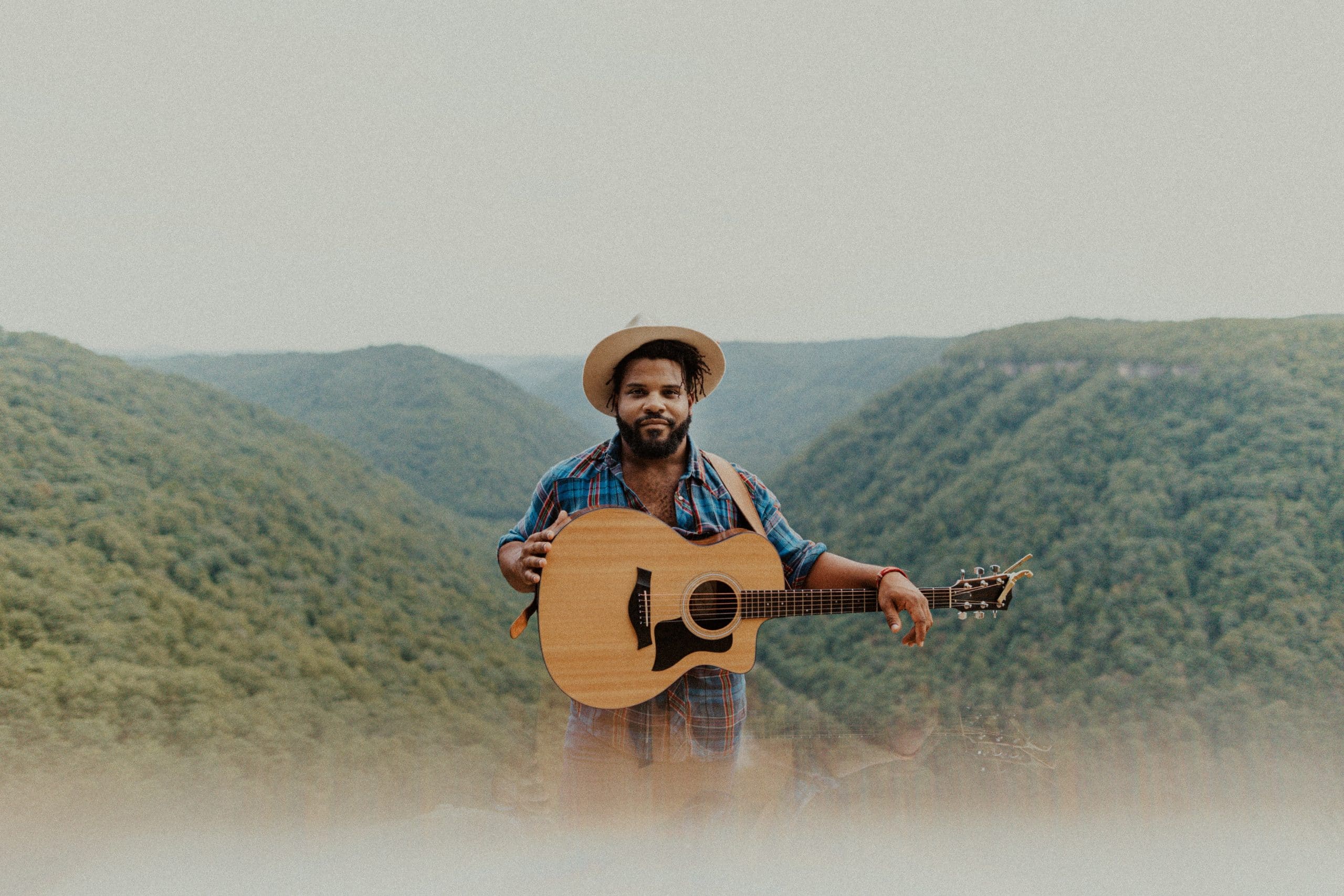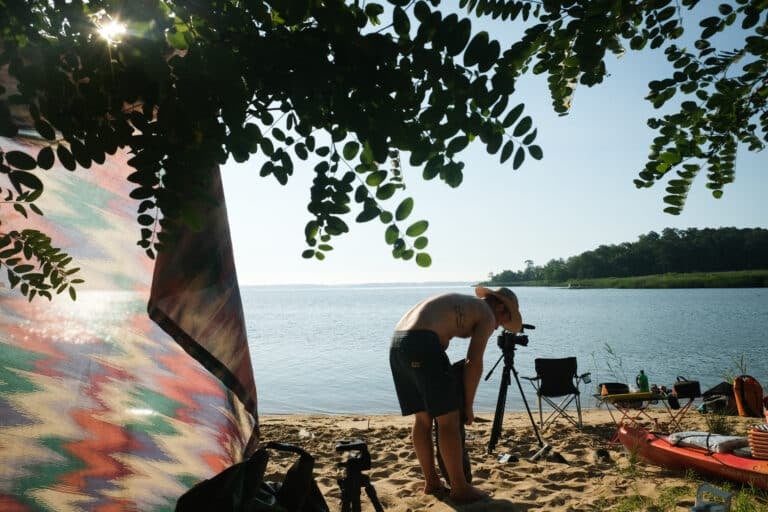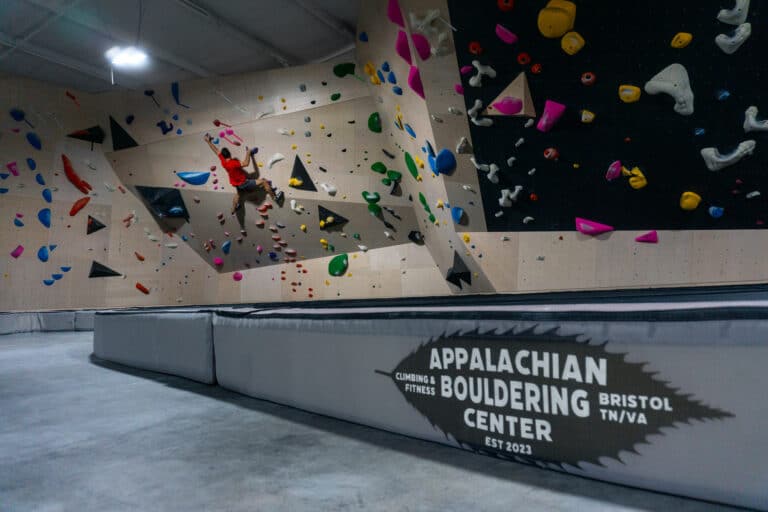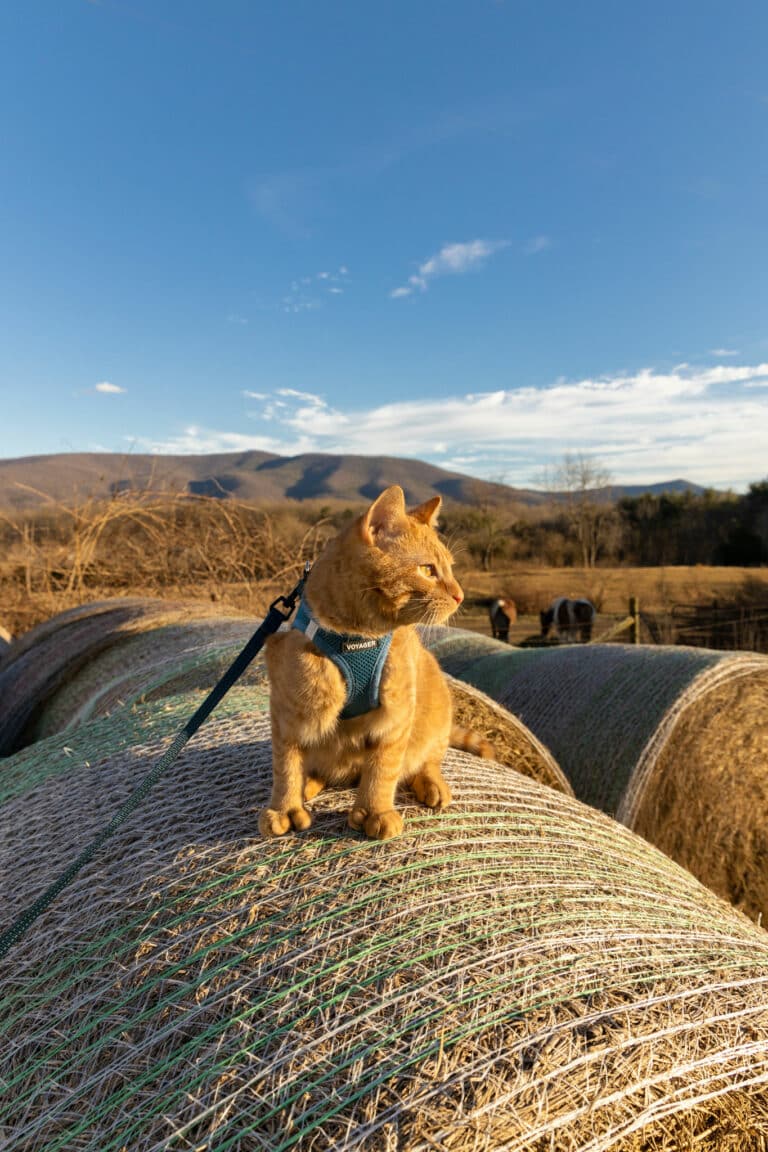Cover photo by Braiden Maddox
For our May issue, artists across the Blue Ridge talked with BRO about what it meant to make music in a year without in-person performances. For the next four weeks, we will be featuring each of those artists and taking a deeper dive into their creative process.
At the beginning of 2020, Scott T. Smith released his debut EP, “Wanted Man.” A little over a year later, BRO talked with Smith about how the pandemic has influenced his thinking and how the music industry can move forward.
BRO: Heading into 2020, what were your plans? What did your year end up looking like?
STS: My year was the culmination of, I would say, five years of very quiet but very diligent hard work. It was one sacrifice after another that culminated with me funding my own EP through manual labor. I was on my way to South by Southwest for the first time as a representative of the Forecastle Foundation with platinum passes as a presenter. I was releasing my first EP. I was in support roles for artists I never thought would look my way. And it all just fell out. The bottom just fell out. That left me feeling heartbroken in a way. It also left me feeling relieved in a way to go back to living very simply. Things had started to move really quickly for this country boy.
I experienced heartbreak and confusion in that moment. I’ve been really thankful, in a way, to slow down because I started moving at a pace that, I think, no one’s intended for. I think a lot of people in bigger cities start fooling themselves and thinking that they’re doing right by always being out or always thinking about what the next thing is. Sometimes, truly the next thing is just getting together for a small meal with the ones that you love the most. I found myself about halfway through the year. It took some time just being okay with where I was at. That’s where I found that peace in realizing that I was just living like I’ve always lived growing up in West Virginia, taking care of a few and working with my hands for money.
Virtual shows took off in 2020. How did you approach staying connected with fans and audiences during this time?
When it comes to live streaming, I’m often made fun of for being a millennial with boomer-like technological ability. I was raised by a boomer, and I’m very much steeped in some of the things of the past.
I have this song called “Pining After You.” The definition of pining is to physically anguish for someone. I don’t think enough people today know that some of these emotions, some of the feelings that make you feel so isolated, have existed for millennia. The human experience is not new. We’re at a really wild point where we’re trying to figure out ways to explain it. I think we’re missing some marks. People need to know that sometimes you don’t just miss somebody, but you physically hurt over how much you miss somebody.
The Speed Art Museum and a few other publications and organizations reached out. We figured it out. Sometimes I needed help from a friend. That was really beautiful. I think that was the first time that artists really started breaking the rules in a way. I need help. I don’t need you in the room, but I do need to talk about gear or I might need to borrow some gear.
Ben [Sollee] talked to me about it. When he tried to do his Lift Up Louisville project with Jim James and the city of Louisville, it was very obvious to him that artists of color and female artists didn’t have the resources in general. There was a disenfranchisement there. It became glaringly obvious that the only people that could give him the files that he really needed, that can collaborate from a distance without any intervention, were white males. It got to the point where I kind of knew what I was doing. And still, even in having the technology and overall resources, I couldn’t bring myself to do it unless I was doing it on behalf of someone else.
Live streaming, for me, is something that I’m just now leaning into this year. Which is wild because a lot of artists are burnt out on live streaming. They’ve done it all. They’ve done every 90s and 2000s cover series they can. Their fans have been tuning in once a week for so long they don’t even know which day it is. So now, this year, I want to intentionally start making some live stream content.
Thinking back on past performances, what have you missed the most, and what do you hope you’ll be able to get back to once we’re able to start having larger gatherings?
About two years ago, I started working on a campaign that I could never really try to figure out how to launch—Remember to Gather—which, now, is ironic.
If we really want to be honest with ourselves, in society, we weren’t gathering with that intention before. We were gathering plenty. There’s definitely a time and place for festival culture in society. What I’m really getting at is that I don’t think people were doing what they’ve been doing now. That’s really what, to me, Remember to Gather, meant at that time. Let’s gather with intention. Let’s gather from the idea of talking about how we need to be more involved with our youth, even those who don’t have children. It’s that village mentality. It’s time we remember to gather like they used to and talk about what needs to happen in our towns and in our homes.
I had COVID, and it was terrifying. I’m not the same I was before, but I’m okay. I’m lucky. I know that because there was a moment when I was sick that I didn’t know if I was going to be okay.
What are your thoughts on starting to schedule live performances?
Live performance is about to try and find some baseline normalcy within the next six months. For me, I think it’s going to look different for a long while. I want to go back to my roots. I think that there is a series involved there where it’s like, “Fireside Talks with Scott T. Smith,” and I’m welcoming my fan base that exists to intimate evenings, whether it’s on a small patch of property or in town at a house with a yard to accommodate 25 people. I really want to encourage that sense of community in that way.
I don’t know if I need to be a part of the wave playing for thousands. I don’t know any artist that says no, so I’m not saying that if the call comes I’ll ignore it. But personally, I want to encourage some warmth. What are we all chasing? I know that personally I’m chasing the cultivation of genuine and authentic moments.
As my career grows, because I believe it will, I believe there is room for me in this industry as a young, Black folk artist. I think the world’s finally opening up to realizing there’s not just room for me. There’s room for thousands more like me. That’s one of my biggest pet peeves is when they try to make me feel like there’s only so much more room in folk for a Black folk artist. That’s not true. There’s 1,000 of me in this one market. There’s 1,000 white boys playing guitar, thinking their songs are going to take them to the next level. Why can’t there be 1,000 Black artists, Latina artists, Asian-American artists? That’s what folk is; it’s immigrant music.
From your perspective as a musician, what do you see the live music industry looking like going forward?
All I’ve heard is people talking about “when we go back to normal.” There is no normal. To be honest, it wasn’t really normal before. If having COVID and being in COVID-land has taught me anything, it’s that none of what we were doing before was working. We were consuming so much at such a high rate. We were gathering and spending so much money. So many raw materials were going into making these tours happen. I think the industry as a whole needs to think about this from a sustainable aspect. I think we need to think about what it is to truly move forward as artists, and also realizing our responsibility to this earth. I think every artist needs to be held accountable to a certain regard, every corporation, every festival.
If we’re going to continue to consume and to gather at such large rates, burn up all this gas and jet fuel to get there, always thinking about more and more and more, 250 shows this year—what are you doing to give back then? For me, I’m going to start as small as I can with that. I’m going to encourage these moments where I’m bringing people to nature.
What do you think that sustainability looks like?
Going forward, when artists release projects, there’s no need to make something until it’s ordered. Sustainable merch practices. There’s no need to put in that vinyl order until you have your vinyl order. I love listening to vinyl, but when you think about the gross crude oil that goes into making vinyl, why do so many projects still have thousands of CDs? You know they don’t have a CD player at home. Why are we still making laserdiscs? Make merch that matters. Make t-shirts out of recycled material. Work with companies that are doing small batch, made-to-order merchandise.
That comes from this thought lineage of being around artists that care. It starts from being from the country, having an intimate relationship with nature and understanding how it’s changed in my lifetime. I can’t wait for the cicadas to come back this year. The 17-year swath is about to start in a few weeks and I want to see if it’s as epic and proportional as we remember. I would hate to see that it’s not. I remember it rattling the window. I hope it still does. So much of our natural world has changed within the last 17 years.
It’s time. And it’s been time. That’s what COVID showed me. To ignore the wakeup call that COVID has been for us as a society is to practice denial, is to practice insanity. At this point, we’re crazy to think that we can keep doing it the way we were before and it’s going to be okay.
As we are starting to see some hope coming out of this pandemic, is there something from the past year that you’ve learned or experienced that you want to carry forward with you?
We were going too fast, and the wheels did fall off the bus. This is not the last iteration of a worldwide pandemic that we will see. It is a part of the symptom that is global warming and climate change. We’ve been given a warning shot.
It is truly about the fine balance of mental health. We’ve lost so many. A fraction of what we’ve lost to COVID, but we’ve lost so many to suicide this year. Isolation is not meant to be a human experience. Solitude is. There’s a difference. So many people felt like they had no choice in their loneliness.
I think it really is about remembering to gather, but remembering to gather with intention. Remembering about this time last year when you were scared, who called? As the year went on, who stayed? Who made sure you had food on your table when you lost your job?
Being in Louisville, Ky., the home of Breonna Taylor, watching my city come to such grips, such division, we need to understand that the communication that’s been happening on a global scale between George Floyd and Breonna Taylor, it’s also a foundation for a conversation about how we move forward in saving our home. It’s not just equality for all. It’s about how we band together to address and take the coming storms more seriously.








